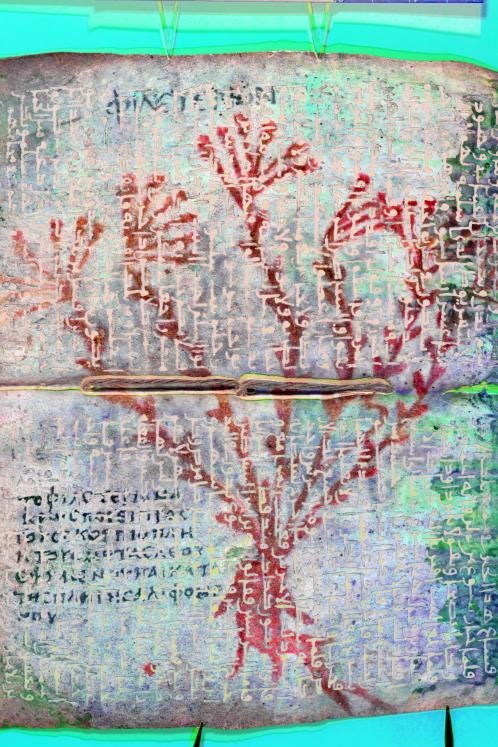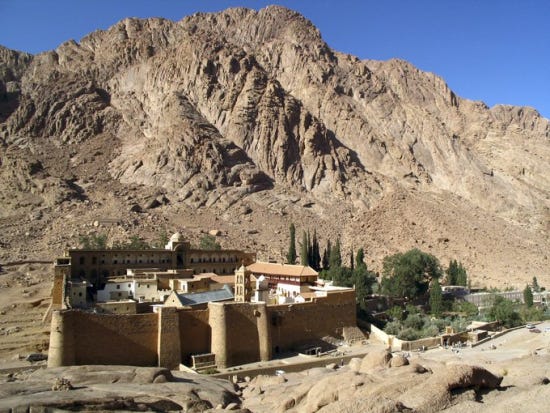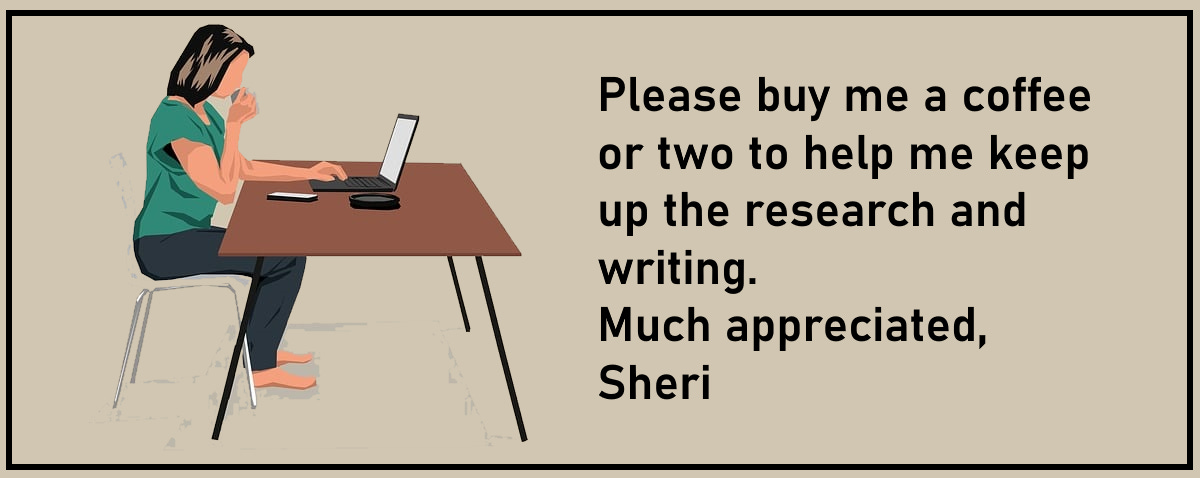St. Catherine's Monastery in Sinai: Egypt's Betrayal of an Ancient Promise Threatens a Living Monument
The alarming truth behind Egypt's alleged breach of the prophet Muhammad's centuries-old promise to St. Catherine's Monastery in Sinai. Explore its history, unique library, and Bedouin guardians.
Egypt is reportedly rescinding a centuries-old promise regarding the ownership of the Saint Catherine Monastery in the Sinai Peninsula, a remarkable and historic living monument. This sacred site welcomes you amidst the dry sand dunes but what awaits its future?
The implications are profound, not only for the Greek Orthodox monks who protect and maintain it, but also for the Bedouin tribes who have been its traditional guardians, and for the library within the Monastery—a collection so invaluable that 'unique' is an understatement.
The Monastery of Saint Catherine (known as Santa Katarina here in Israel, not to be confused with the Tel Aviv restaurant) would have been safe forever had former Prime Minister Menachem Begin not returned the Sinai to Egypt as part of a (very cold) peace treaty after Israel captured the Sinai Peninsula during the 1967 Six-Day War. This war, remember, was intended by Arab states as another in a series of attempts to erase Israel from the map.
Now, Santa Katarina is back in Egyptian hands
While there is debate over whether or not Muslims built the Taj Mahal over a sacred Hindu site, there is no debate that Muslim invaders built al-Aqsa over the ancient Israelite temple in Jerusalem. But surely non-Muslim sacred sites are safe now, in our modern era? Apparently not — the most famous sites to have been destroyed in recent times include the Bamiyan Buddhas, destroyed by the Taliban in 2001, and the Palmyra ruins in Syria, destroyed by the Islamic State in 2015.
Therefore, I can understand the consternation of the philosopher, Homer Pavlos, whose X post on the matter appeared on my feed, catching my attention.
BREAKING: St. Catherine’s Monastery Closed in Protest!
Pavlos's initial X post revealed: 'The monastery closed as a sign of mourning! St. Catherine’s Monastery closed its access this afternoon, announcing that it will remain closed until Sunday. This sudden move contradicts the assurances given by the Egyptian authorities that "nothing is going to change."
Because I loved traveling in the Sinai before it was returned to Egypt, I immediately sought more information and tagged Pavlos when posting an article I found, asking if there was truly a serious danger to the site.
He responded:
No, that [referring to the article I shared] is incorrect and spreads misinformation. The Egyptian authorities have violated the longstanding agreement by taking ownership of the Monastery from the monks. While they emphasize that nothing will change regarding the practice of religion, that was never the issue.
The real issue is that, without legal ownership, the monks lose their authority to produce their own food or even remain at the Monastery if Egypt decides otherwise. They could be denied visa renewals or be pressured to leave, leaving the Monastery vulnerable to state control.
In 2002, Egypt officially recognized—through UNESCO documents—that the Greek Orthodox monks held ownership of the Monastery, which has belonged to the Greek Orthodox tradition since 520 AD. This recognition has now been violated. The Egyptian authorities have stripped the monks of ownership.
What we fear, especially the monks, is that the Egyptian archaeological services or other government agencies could soon force them out, whether by denying visas or by applying indirect pressure, clearing the way for Egypt to repurpose the Monastery for tourism.
Since 2020, Egypt has been heavily investing in turning the Sinai region into a major tourist destination. The Monastery lies at the heart of this development zone.
The entire situation is a scandal and a serious breach of historical and religious agreements—agreements that were honored by everyone from Prophet Muhammad, to the Ottomans, to the Crusaders. Now, for the first time, these guarantees are being broken.
A Legacy Honored for Centuries: The Ashtiname of Prophet Muhammad
I then browsed through Pavlos’ X account and found posts telling the full story of Santa Katerina. Enthralled, let me now share that with you. . For your convenience, I am simply copy-pasting his posts below, claiming no authorship over any of this remarkable historical presentation.
May 31:
Prophet Muhammad and the Ashtiname
Prophet Muhammad has issued a document known as the Āshtīnāmeh (or Testament of Muhammad) granting protection to the Monastery of Saint Catherine at Mount Sinai and its monks.
The document was issued in 623, and includes the following provisions:
* The Christian monks of Sinai are guaranteed freedom of worship.
* Their churches and places of pilgrimage shall not be destroyed or desecrated.
* Christians shall not be compelled to convert to Islam.
* Muslims are to offer protection to the monks and their property.
* If a Christian is in need, Muslims must assist them without expecting reward.
* Monks shall not be forced to pay different or unfair taxes.
* No military personnel may enter the monastery or confiscate its property.
The Ashtiname of Prophet Muhammad includes a strong warning against violating its terms. Any Muslim who violates the covenant is acting against the will of God and His Prophet.
The document explicitly states: "Whoever violates this covenant, whether he be a king or a common man, shall be considered a violator of the covenant of God and His Messenger."
----------
The document is “signed” with the "blessed hand" of Prophet Muhammad.
No one until today violated this Testament despite who ruled Egypt.
The Jebeliya Bedouin: Ancient Protectors of St. Catherine's
The Bedouins associated with Saint Catherine's Monastery at Mount Sinai play a unique and historically significant role in its protection and daily functioning, going back many centuries.
These are primarily members of the Jebeliya tribe, a group of Bedouins who were settled near the monastery during the Byzantine era by Emperor Justinian, to serve and protect the monastery.
Eutyches, the ninth century Patriarch of Alexandria, writes that when Justinian built the monastery, he settled next to it some two hundred families brought from the Pontos of Anatolia, and from Alexandria, in order to guard, defend, and assist the monks. The modern-day bedouin are considered to be the descendants of those families that were converted to Islam in the seventh century, and that today form the Sinai bedouin families that make up the Jebeliya tribe. Its members to this day trace their lineage to these soldiers, and are proud of their Greek and Roman origins, as well as of this denomination and cultural identity.
(“Jebeliya” comes from the word “jebel“, which means “mountain” in Arabic. The term “bedouin” in the Arabic language refers to one who lives out in the open, in the desert.)
The Jebeliya Bedouins act as guardians of the monastery, especially in times past when there were dangers from raiders, bandits, or hostile tribes.
Bedouins help with day-to-day tasks such as maintaining the grounds, caring for animals, guiding pilgrims and tourists, and transporting goods.
The monks treat the Bedouins as allies and stewards. In return, the Bedouins see the monastery as part of their heritage, even though they are Muslim.
There is a mutual love between them.
The monks, especially the abbot (hegoumenos), have historically served as neutral and respected arbiters in conflicts between Bedouin families or clans.
This story is literally like a movie in cinema. But its true!
June 1:
A Library like no other
The Greek Orthodox Monastery of Saint Catherine at Mount Sinai, built by the Byzantine Emperor Justinian, holds the second most important library in the world after the Vatican. For several years now, there has been an ongoing effort to digitize part of its library to prevent the loss of its invaluable contents.
What most people do not realize is that the content of this library is truly remarkable. I have been studying it for quite some time now and can share some information based on what has been digitized so far. Over 1,100 manuscripts have been digitized so far (approximately 30.000 in total maybe more), with the oldest I have identified dating back to 700 AD till late 1800's.
Among the Christian Byzantine texts, there are also outstanding manuscripts, such as works by Athanasios Komnenos, the Apostles, Chrysostom, Aristotle, and Homer, as well as medical texts by Hippocrates. An Hippocratic work includes a plant that appears to have been used as a remedy for scorpion stings.
There are many, many thousands of works by great minds preserved here.
The monastery stands at the crossroads of the three monotheistic religions and is known to have been visited by the greatest religious and philosophical figures—regardless of their faith—who would come to this living library to study alongside the monks and be educated by the immense wealth of knowledge preserved there.
In the photo, you can see part of a manuscript of Homer’s Iliad from 1397, which is housed at the Monastery of Saint Catherine.
A truly unique library filled with priceless knowledge.
Later that day, something about the Bedouin:
Jebeliya Bedouins with their camels outside the Monastery of St. Catherine at M.t Sinai. They are the descendants of 200 families from Pontus in Anatolia, of Greek & Roman origin, who were settled there in the 6th century by Emperor Justinian I to serve & protect the monastery.
June 2:
Palimpsests and Hidden Scientific Discoveries
The manuscripts of the Monastery of Saint Catherine are incredibly important for the science, and I will explain why. They are what we call palimpsest manuscripts. What does that mean?
The monastery was isolated. Because manuscripts were made from the stomachs of small animals and were therefore very precious, when the writing began to fade, the monks would scrape off the text and write a new one over it. So, we might have a manuscript from the 9th century, but hidden underneath there could be a text from the 4th century. This is how previously unknown texts by Archimedes and Hippocrates have been discovered.
Specialist researchers studying the parchments in the library of Saint Catherine’s Monastery at Sinai used multispectral imaging technology to uncover what was hidden beneath a Gospel text that had been written over an older manuscript. They found that beneath it was a beautiful illustration of medicinal herbs. This is how the ancient text by Hippocrates, which I mentioned to you yesterday, was discovered.
For these reasons, this library is important because it can teach us much about the history of science, parts of which are considered lost. It is one of the oldest libraries in the world, and the only one with an unbroken and continuous use since antiquity.
Next I will tell you how we discovered the map of the Greek Astronomer Hipparchus - founded in the Monastery - that is considered to be the first Astronomy Map in the world! [I did not find that story]
June 3:
A covenant broken for the first time
When Sultan Selim conquered Egypt in 1517 and extended Ottoman control to Sinai, the monks of Saint Catherine’s Monastery presented him with the "Ashtiname" (the document issued by the Prophet Muhammad …[just below this text]).
Instead of ignoring or rejecting it, Selim honored it. He not only accepted it as valid but reaffirmed it with a new firman (imperial decree) of his own, thereby officially placing the monastery under the protection of the Ottoman Empire.
Islam, Crusaders, Ottomans, everyone protected the monastery and honored it.
Today, the Egyptian authorities, want to violate the agreement and take the ownership of the monastery from the monks.
Because Israel is not supported on the Substack payment platform, I have set up an alternative for those who want to support my work.
You can make one-time or repeated donations in your own currency using Paypal (click image above) or the Ko-fi payment platform here. Israelis can send me a private message for another option.
Articles will always be free for all subscribers but a one-time or repeated donation is a way to help me sustain myself while doing all the work involved in putting these articles together and would be greatly appreciated.
Thank-you to all those who have supported my work by subscribing and/or by donating to my writer’s fund.













I want to sincerely thank you, Sheri, for your great effort and the enlightened article that has truly illuminated many important points for me regarding the issue of Saint Catherine’s Monastery. Your detailed narrative has opened new horizons of understanding.
However, I feel I must humbly clarify that the story of the document attributed to Prophet Muhammad—the Ashtiname—holds many doubts regarding its authenticity. Many modern studies suggest it was actually written by Caliph Umar ibn al-Khattab, not the Prophet himself. This does not diminish its historical significance, but I believe it is important to be aware of this when discussing the document.
Here in Egypt, our government insists that what is happening at the Monastery is nothing more than restoration works, and that the recent criticism is just a conspiracy targeting Egypt. Yet, truthfully, I find it hard to trust anything the government says, especially when it comes to property rights or religious freedoms.
In closing, I again thank you, Sheri, for your gracious and insightful narrative. It has truly been a light in the darkness, giving me a deeper perspective that deserves respect and attention. I will wait for your next trip to Sinai, hoping to be honored by meeting you in person.
I learn something new on this site every day. Thank you👍